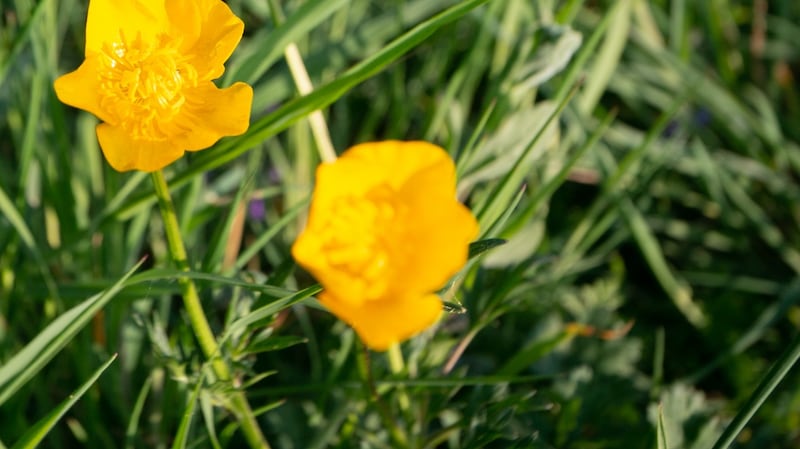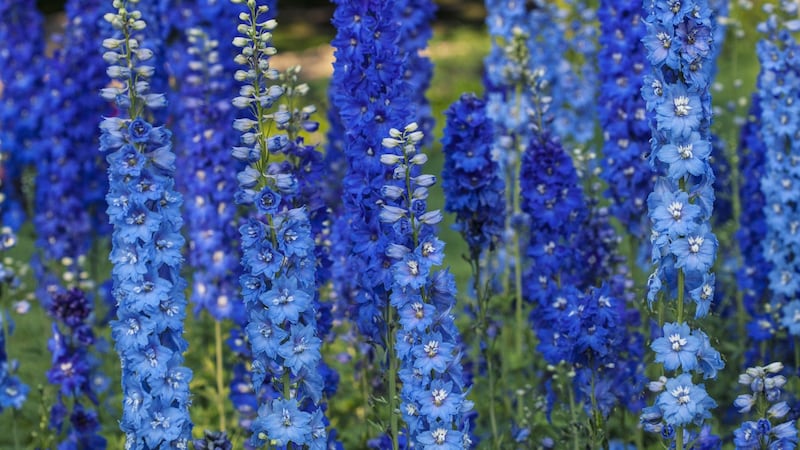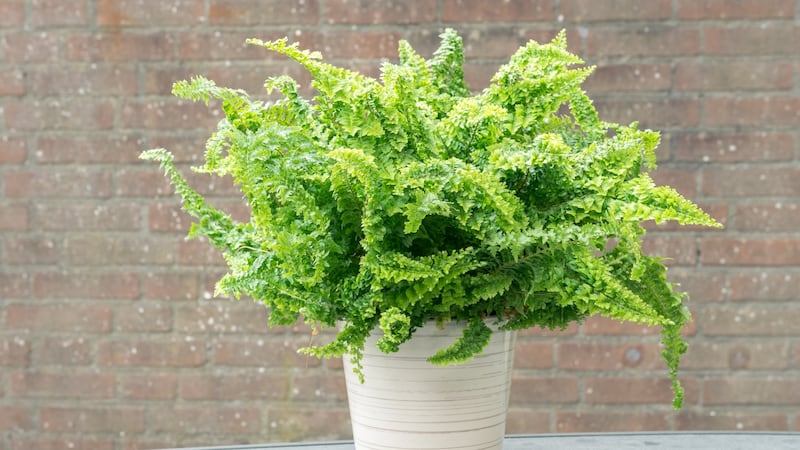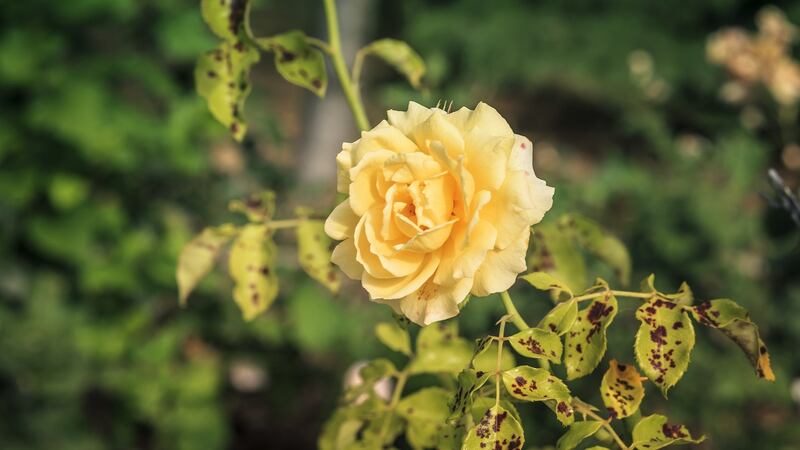As gardeners, it’s easy for us to observe the effects that temperature has upon our plants, from the first harsh frosts that blacken dahlias in late autumn to the summer heat waves that send tomato plants soaring towards the sky.
The effect of light – its quality, duration and intensity and the profound impact that this has upon plant growth – is far less appreciated. Yet it’s the magic ingredient in so many vital plant processes, from the role it plays in germination to the ways it regulates growth and flowering.
For example, it’s autumn’s naturally dwindling light levels that causes a reduction in the production of chlorophyll, the plant pigment that makes leaves appear green and allows plants to produce their own food through photosynthesis.
That same seasonal drop-off in chlorophyll production is the reason why we’re able to enjoy the rich autumnal shades emerging in the foliage of many kinds of deciduous and herbaceous species at this time of year. This is because, temporarily stripped of its obscuring veil of chlorophyllous green, other colourful plant pigments known as anthocyanins and carotenoids that are also present in the foliage (remember those old school science lessons?) become briefly visible to the human eye, resulting in that glorious seasonal display of fiery colour. In those years where autumn gives a prolonged period of sunny, dry weather, that seductive display is at its very best, whereas a damp, cloudy autumn has the opposite effect, reducing its intensity and length.
Storing energy
That same autumnal shift in day length and light intensity is also the signal for many deciduous and herbaceous species to drop their leaves as the foliage begins its final process of death and decay. But this only happens after the plants have finished transferring all of the precious energy stored in that foliage back into their woody trunks, branches and/or below ground into their root systems, where it will be kept until needed next spring. In this way, plants can best preserve their energies and more easily sit out the cold, dark months of winter.

Autumn aside, the duration, intensity and quality of available natural light has a dramatic effect on the speed, vigour and timing of plant growth throughout the year as well as on the duration and timing of a plant’s flowering period. It’s why, by artificially manipulating available light levels, gardeners can force certain bulbous species such as amaryllis, hyacinths and narcissus into bloom in time for Christmas and why commercial growers can get tropical species such as poinsettias, kalanchoes and Christmas cactus into perfect flower.

If you’ve ever struggled to successfully raise plants from seed, then it’s also well worth bearing in mind that for many species, exposure to light is one of the crucial triggers for germination (foxgloves, for example) while for others (delphiniums, for example), a complete absence of light – total darkness – is necessary.
Germination aside, so hardwired are most species of plants to seek out light that they will naturally grow towards it, a process known as phototropism. Deprived of it, they will desperately stretch out and elongate their stems in a heroic effort to reach it, a process known as etiolation that's characterised by long, weak stems and pale, chlorotic leaves. If you've ever left a potato for too long in your kitchen's vegetable drawer, then you'll have seen this process take place as the emerging shoots vainly scramble to find light. Or if you've ever tried raising seedlings indoors in a spot where it's tricky to provide them with sufficient natural light, you'll have noticed how they'll naturally stretch their slender stems towards the nearest source in a determined effort to maximise growth, a growing challenge that can be overcome by placing reflective sheets of white paper near them or (budget permitting) by using an electric propagator with its own grow-lights, such as the Vitapod (see quickcrop.ie). Fascinatingly, the flowers of some plant species – classic examples include sunflowers, buttercups and tulips – are also phototropic.
Boston fern
Deprived of sufficient natural light for too long, plants can also eventually sicken and die, which is why it’s so important to carefully choose species that are suitable for the growing conditions you’ve provided. Plant a sun-loving species in a shady bed, for example, and you’re almost certainly condemning it to a slow and undignified death.

Conversely, for certain species that have evolved to grow in low light conditions, too much natural light can be too much of a good thing. Take, for example, the popular houseplant known as the Boston fern (Nephrolepis exaltata). In the wild, this evergreen species can be found naturally growing in humid, shady rainforests beneath the protective leafy canopy of tropical trees. So it’s not surprising that it will deeply resent being placed in a bright, south-facing room where its delicate fronds will be quickly scorched by direct sunshine.
Given the above, it follows that understanding the role that light plays in your garden or allotment throughout the changing seasons is key to growing healthy, happy plants. At this time of year, as light intensity lessens and we lose several precious minutes of daylight every day until December’s winter solstice, it’s particularly important to recognise the limitations that autumn and winter’s lower light levels place on photosynthesis and vigorous plant growth, even in covered structures such as polytunnels and glasshouses where plants are protected from the worst of winter cold and rainfall. No amount of heat will compensate for these depleted light levels, so try to be realistic in terms of your expectations of what can be grown under cover at this time of year while also maximising light penetration by keeping their glass panes or polythene coverings clean and transparent.
The upside of autumn’s slowed growth levels is the wonderful opportunity that it gives us gardeners to safely divide and transplant many kinds of plants as well as to plant young bare-root and pot-grown trees, shrubs, hedging and perennials without fear of shocking their vulnerable root systems or worrying about the time-consuming labour of keeping them watered during any hot, dry spells. The result is happier, healthier plants with the time to slowly but surely establish strong, vigorous root systems before the soaring light levels of spring inevitably trigger a complete reversal of their winter dormancy, signalling the beginning of yet another growing year that’s a natural part of the ebb and flow of every garden’s cycle of life.
This week in the garden
Prune and tie-in the canes of rambling and climbing varieties of roses, making sure to use a clean sharp secateurs and/or long-armed loppers and wearing a sturdy pair of gloves, goggles and long-sleeved coat to protect your eyes, hands and arms against possible injury from those super-sharp thorns.

Where/when you suspect that rose plants may be infected with common rose diseases such as blackspot, it’s best to collect the prunings along with any fallen leaves around the base of the plants and carefully dispose of these by binning or burning them rather than adding them to the compost heap where the disease could overwinter on infected leaves.
Continue to sow seed of hardy annuals such as larkspur (Consolida), ammi, gypsophila, sweet pea, cornflowers (Centaurea) and orlaya for vigorous, early-flowering plants next year. Seed stockists include all good Irish garden centres along with specialist online suppliers such as mrmiddleton.comand seedaholic.com
Dates for your diary
Fantastic Foliage & Flowers, a Zoom talk by gardener and plants man Conrad McCormick on behalf of the RHSI is on October 27th (7.30-9pm), see rhsi.iefor details. From October 31st to November 12th the 26th UN Climate Change Conference of the Parties (COP26), Uniting the World to Combat Climate Change, see ukcop26.org; Launched by Gaisce (The President's Award) this autumn with the support of the All-Ireland Pollinator Plan, Bulbs for Bees is a country-wide initiative which aims to help Ireland's biodiversity by encouraging people to plant pollinator-friendly flowering bulbs. To learn more about the initiative and how to participate, see pollinators.ie




















